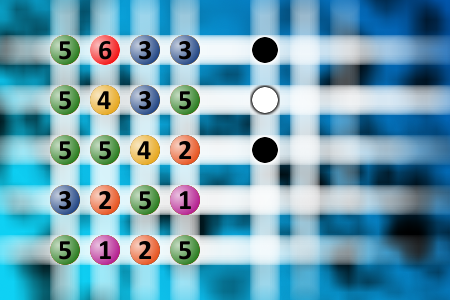What a winning combination?
The computer chose a secret code (sequence of 4 digits from 1 to 6). Your goal is to find that code. Black circles indicate the number of hits on the right spot. White circles indicate the number of hits on the wrong spot.Correct answers: 20
#brainteasers #mastermind

A man has six children and is...
A man has six children and is very proud of his achievement. He is so proud of himself, that he starts calling his wife, "Mother of Six" in spite of her objections.
One night, they go to a party. The man decides that it's time to go home and wants to find out if his wife is ready to leave as well.
He shouts at the top of his voice, "Shall we go home now, 'Mother of six?'"
His wife, irritated by her husband's lack of discretion, shouts right back, "Anytime you're ready, Father of four."
One night, they go to a party. The man decides that it's time to go home and wants to find out if his wife is ready to leave as well.
He shouts at the top of his voice, "Shall we go home now, 'Mother of six?'"
His wife, irritated by her husband's lack of discretion, shouts right back, "Anytime you're ready, Father of four."

